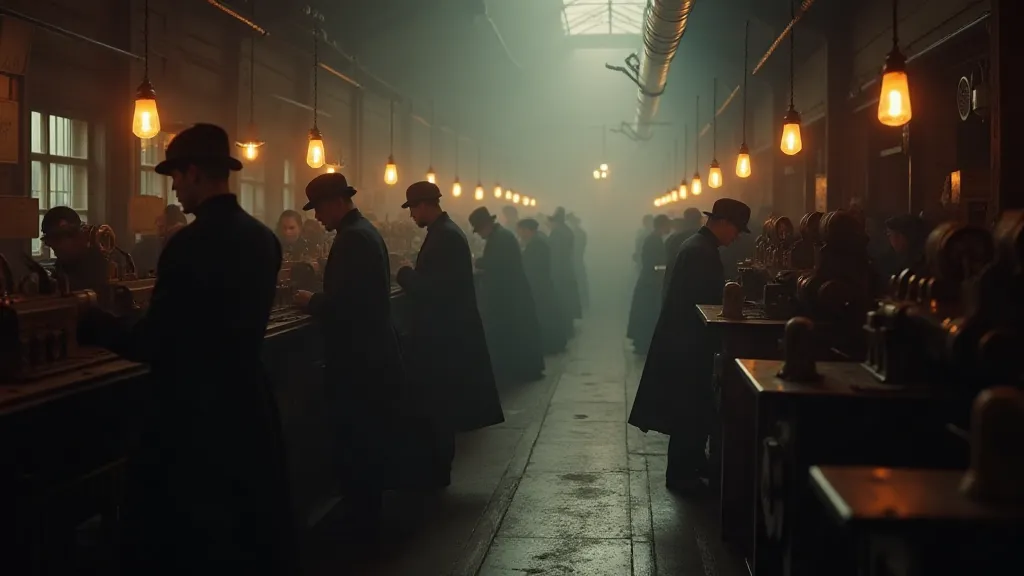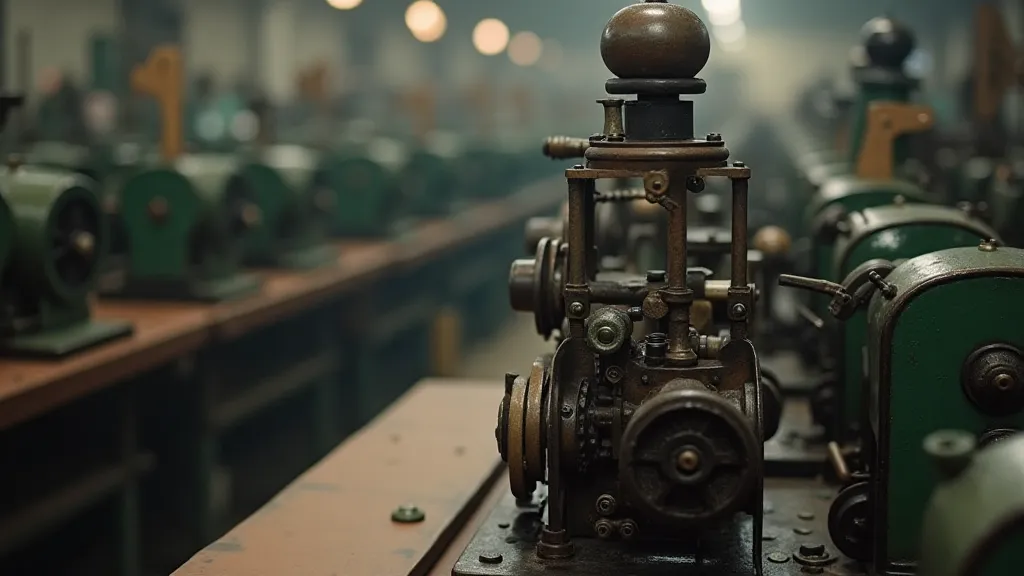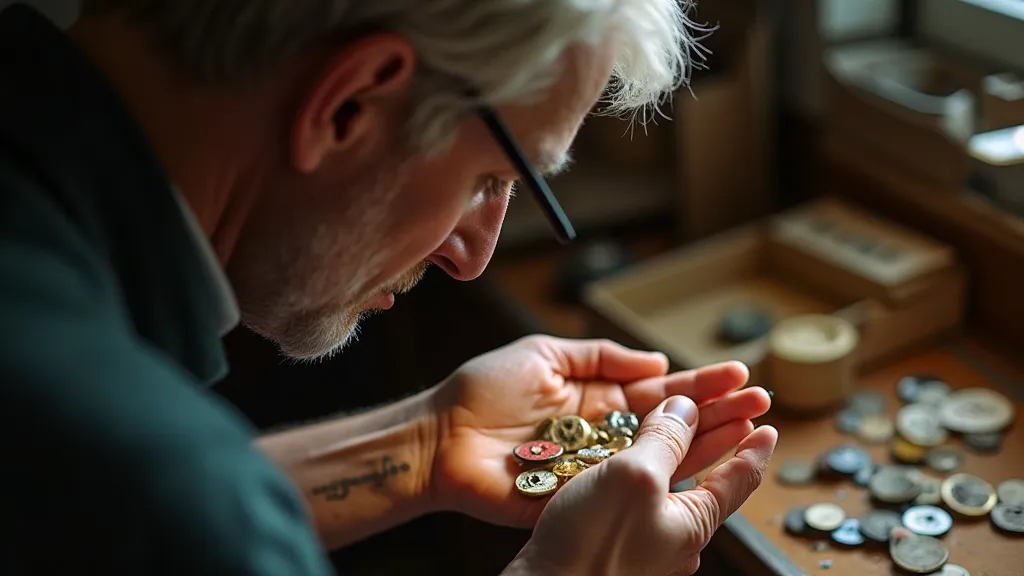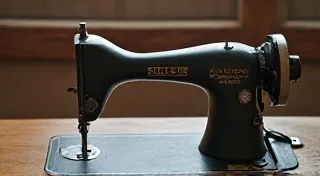The Button's Hum: An Auditory Archaeology of Industrial Production
There's a quiet magic in holding a vintage button. It’s more than just a fastener; it's a tiny artifact, a miniature echo of a bygone era. We admire the intricate designs, the subtle sheen of the metal, the delicate artistry of the glass or the comforting warmth of the horn. But what if we could hear it? Not the clicking of a needle through fabric, but the button’s hum – the collective sound of its creation, a symphony of industry that shaped both the object and the world around it?
My own fascination began, as so many do, with an inheritance. My grandmother, a quiet woman with hands that always seemed busy, left me a collection of buttons – not neatly cataloged, but scattered in a large, overflowing tin. Sorting through them felt like unearthing buried treasures. Each button whispered a story – a Victorian mourning brooch, a brightly colored celluloid from the roaring twenties, a sturdy metal disc from the war effort. It wasn't just about the buttons themselves; it was about the sounds that brought them into being.

The Early Days: Hand-Crafted Precision
Before the clang and whir of mechanized production, buttons were painstakingly crafted by hand. Imagine the quiet tap, tap, tap of a craftsman’s hammer shaping metal, the careful carving of bone or horn, the meticulous painting of early glass buttons. These weren't mass-produced goods; they were individual works of art, symbols of status and refinement. Each button bore the subtle mark of the artisan’s hand, a testament to their skill and dedication. It’s humbling to consider the time and expertise required to create a single, relatively simple button before the advent of industrial machinery.
The earliest buttons, dating back to the Bronze Age, were often functional rather than decorative. They were essential for fastening clothing, and their design reflected the limited resources and skills of the time. As technology advanced, and trade routes expanded, materials like glass, horn, and imported metals became more readily available, allowing for greater experimentation with form and design. These early buttons were often status symbols, worn by the wealthy and powerful to signify their position in society. The sounds associated with their creation would have been more intimate, reflecting the quiet precision of a skilled artisan’s workshop.
The Industrial Revolution and the Button Boom
The Industrial Revolution irrevocably changed the landscape of button production. The introduction of machinery – particularly the button-making machine – dramatically increased output and lowered costs, making buttons accessible to a wider population. Suddenly, buttons weren't just for the elite; they were a ubiquitous feature of everyday clothing. The sounds of the factory floor – the relentless clanging, whirring, and hissing – replaced the quiet tap of the artisan's hammer.
Factories sprung up across Europe and America, employing countless workers, many of them women and children. The rhythms of their lives became synchronized with the relentless pulse of the machines. Imagine the constant hum of the looms weaving fabric for button coverings, the deafening roar of the presses stamping out metal discs, the clatter of workers sorting and packaging the finished product. This wasn't just about producing buttons; it was about creating a new industrial order, one defined by mass production and standardized design.
Celluloid, a revolutionary new plastic, entered the scene in the late 19th century, offering a vibrant palette of colors and a surprisingly affordable price point. The sounds of celluloid button factories – the gurgling of the chemical processes, the grinding of the material, the quick-drying heat – were distinctive and, in many cases, quite hazardous. The dangers faced by these workers – exposure to toxic chemicals, the risk of injury from the machinery – are often overlooked in our appreciation of these beautiful artifacts.

Materials and Their Sonic Signatures
The material from which a button is made also contributes to its “sonic signature.” Metal buttons, particularly those made from brass or steel, tend to have a sharper, more resonant sound when dropped or handled. Glass buttons, with their delicate fragility, produce a higher-pitched tinkling sound. Horn buttons, made from animal horn, have a warmer, more muted sound. Even the way a button is finished – polished, matte, or textured – affects its acoustic properties.
Consider the sound of a Bakelite button, a durable plastic that rose to prominence in the 1920s and 1930s. Its unique molecular structure produces a distinctive “thud” when dropped, a sound that’s instantly recognizable to collectors. This subtle difference in sound, like a fingerprint, helps to differentiate between materials and adds another layer of appreciation for these vintage treasures.
Collecting and Preservation – Listening to the Past
When we collect vintage buttons, we’re not just acquiring objects; we're inheriting a legacy, a connection to the past. It’s a responsibility to preserve these artifacts, not just for their aesthetic beauty but also for the stories they tell. Understanding the history of button production – the machinery, the materials, the workers – allows us to appreciate the true value of these seemingly small objects.
Restoring a vintage button can be a delicate process. Harsh chemicals can damage the material, and aggressive polishing can erase the subtle markings of age. A gentle cleaning with a soft cloth and a mild soap is often the best approach. Sometimes, simply admiring the button’s imperfections – the tiny scratches, the slight discoloration – adds to its charm and character. These are the echoes of the button’s hum, a reminder of its journey through time.

The Enduring Legacy
The button’s hum – the collective sound of its creation – may have faded over time, but its legacy endures. These tiny artifacts offer a unique window into the past, a glimpse into the lives of the workers who made them and the consumers who wore them. By listening carefully, by appreciating the details, and by preserving these treasures for future generations, we can keep the button’s hum alive, a testament to the ingenuity and artistry of a bygone era.





